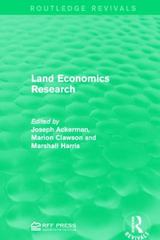Hi, Please answer the questions in these images with as much detail as possible. Thank you!
(These photos are not related to one another).
Photo 1:
Exchange Rates The following is a summary of the supply and demand schedule for U.S. dollars. Answer the following questions based on table 1.1. Table 1.1 Exchange rate (yen per $) 100 110 120 130 140 150 Quantity Supplied in U.S. $'s (Billions) 20 30 40 50 60 70 Quantity Demanded in U.S. $'s (Billions) 60 50 40 30 20 10 (a) Graph the supply and demand curves. What is the equilibrium exchange rate (yen per dollar)? (b) What is the equilibrium exchange rate in dollars per yen (how many dollars do you get for a yen)? (c) Which would you prefer to have if your bank will exchange yen for dollars at the equilibrium exchange rate you found in question (a), $5,000 dollars or 500,000 yen? Explain. (d) If the exchange rate is fixed by the U.S. government at 150 yen per U.S. dollar is there an excess supply or excess demand? (e) Would this policy stimulate imports compared with the equilibrium exchange rate? Explain. (f) Suppose there is a new product made here in the U.S. that Japanese consumers living in Japan just have to have. How will this change the equilibrium exchange rate you found in question (a) --increase, decrease, remain the same? Explain.Decision Making over Time Year Salary (A) 50. JO UAWNE Salary (B) 65,000 55,000 65,000 57,000 65,000 59,000 67,000 62,000 69,000 64,000 72,000 67,000 74,000 69,000 77,000 72,000 79,000 75,000 82,000 78,000 84,000 81,000 12 87,000 84,000 13 89,000 88,000 14 89,000 91,000 15 89,000 95,000 16 92,000 95,000 17 92,000 95,000 18 94,000 95,000 19 94,000 95,000 20 96,000 99,000 1. Economics assumes people are interested in their rational self interest. Suppose a person works 20 years. Which job is the better choice (ceteris paribus)? An explanation of what ceteris paribus means should be given before deciding which job is better. 2. If the person invested their extra earnings (how much more they would make compared to the job they did not take based on your answer to question 1) each year how much additional money would they have in their account at the end of 20 years when they retire? The interest rate is constant at 10 percent per year. 3. Suppose the person works 40 years. Which job is the better choice? I will assume that the person has reached the top of the pay scale and pay will receive the same yearly salary they received in their 20" year of work for the remaining years they work.Figure 8.3 Aggregate supply and demand P Price Level AD P 100 200 300 400 Real Output (billions of dollars per year) 26. Using Figure 8.3, if the federal government decided to cut taxes the A) Aggregate supply would shift to the left, a shift of the aggregate supply curve from AS to AS1. B) Aggregate supply would shift to the right, a shift of the aggregate supply curve from AS, to ASz. C) Aggregate demand would shift to the left, a shift of the aggregate demand curve from AD, to ADJ. D) Aggregate demand would shift to the right, a shift of the aggregate demand curve from AD, to AD2. 27. Using Figure 8.3, if OPEC cut crude oil production A) Aggregate supply would shift to the left, a shift of the aggregate supply curve from AS, to AS1. B) Aggregate supply would shift to the right, a shift of the aggregate supply curve from AS, to ASz. C) Aggregate demand would shift to the left, a shift of the aggregate demand curve from AD, to AD. D) Aggregate demand would shift to the right, a shift of the aggregate demand curve from AD, to AD2. 28. The misery index was developed by Authur Okun in the 1960's and can be used to measure the level of misery in a country. The misery index is calculated by: A) Adding the growth rate of GDP to the growth rate of the GDP deflator. B) Adding the growth rate of GDP to the unemployment rate. C) Adding the inflation rate to the unemployment rate. D) Subtracting the growth rate of GDP from the inflation rate.Question #1. The following table contains information that can be used to solve for the macro equilibrium. Solve algebraically for the equilibrium. (Hint Y = AE at the equilibrium). Show all work. Taxes Imports GDP 20 % of DI Ca = 200 S G X 10 percent NX AE lu GDP MPC = .8 of GDP 0 0 0 200 -200 250 500 200 0 200 1150 -1150 500 100 400 520 -120 250 500 200 50 150 1420 -920 1000 200 800 840 -40 250 500 200 100 100 1690 -690 1500 300 1200 1160 40 250 500 200 150 50 1960 -460 Question #2. What is the value of the complex Keynesian Multiplier (based on the table above)? Show all your work. Question #3. Close a recessionary GDP Gap of $900 using the simple Keynesian Multiplier. Use Fiscal Policy to close the GDP Gap. The MPC is .75. Show all work. This question is not related to the questions above. Case 1: Government Spending Policy. Case 2: Government Tax Policy










